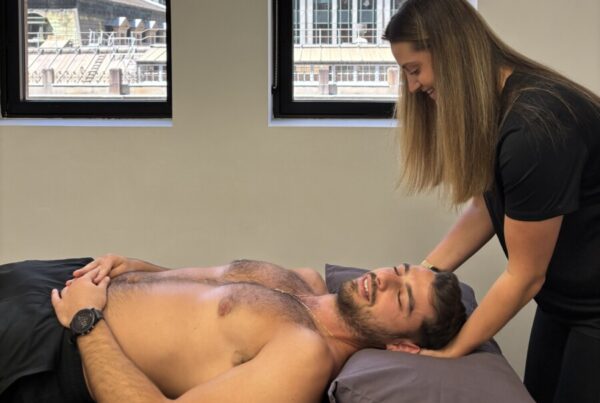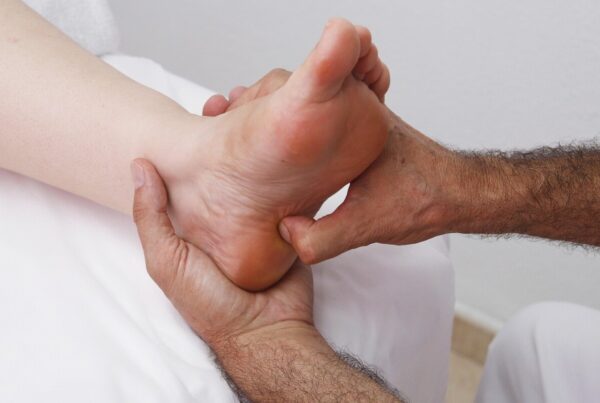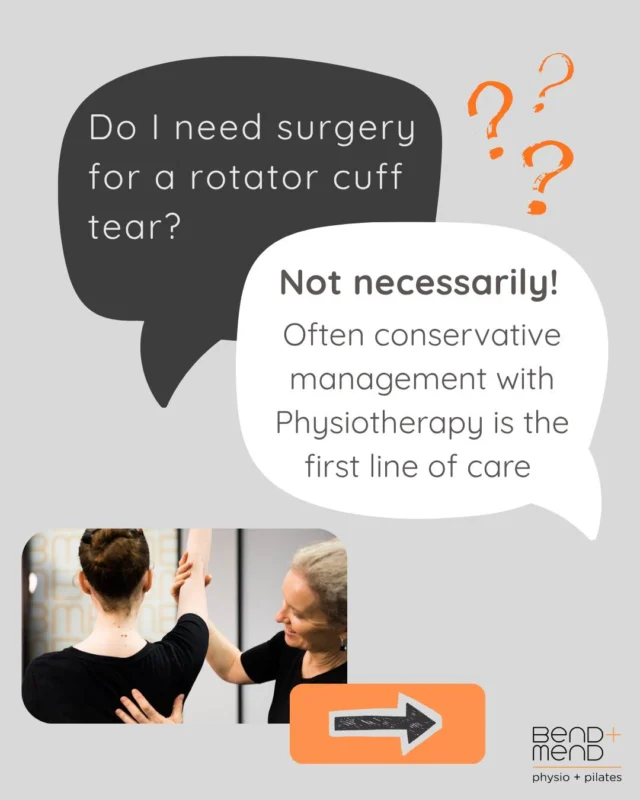Back pain is one of the most common musculoskeletal complaints worldwide. According to self-reported data from the 2022 National Health Survey (NHS) by the Australian Bureau of Statistics (ABS), an estimated 4 million Australians; around 16% of the population, were living with back problems (ABS 2023). The prevalence of back issues increased with age and was comparable between men and women. More commonly discs and facet joints may be the cause of lumbar spine pain however in the general adult population, spondylolisthesis affects approximately 5-8% of people.
Firstly, what even is Spondylolisthesis?
Spondylolisthesis occurs when one vertebra slips forward over the vertebrae below it due to a fracture of the pars articularis. This slippage can compress the spinal nerves, leading to lower back pain, stiffness, and sometimes radiating symptoms such as numbness, tingling, or weakness in the legs. Although similar in name this is not to be confused with Spondylosis which is an umbrella term often applied non-specifically to any degenerative lesion of spine.
Wiltse and Newman (1976), created a classification system for the different types of Spondylolisthesis:
 Type I – Dysplastic Spondylolisthesis – this is where these changes are present from birth. This is often seen with congenital conditions such as spina bifida which cause malformation of the spinal column in utero.
Type I – Dysplastic Spondylolisthesis – this is where these changes are present from birth. This is often seen with congenital conditions such as spina bifida which cause malformation of the spinal column in utero.- Type II – Isthmic Spondylolisthesis – this is often seen with younger athletes in sports that require repetitive hyperextension such as gymnasts and dancers.
- Type III – Degenerative Spondylolisthesis – this can occur when there is weakening of the pars articularis due to changes such as spondylosis and thus a forward slippage can occur. This is most prevalent in older adults.
- Type IV – Traumatic Spondylolisthesis – this is seen after an acute trauma. Due to the location of the fracture this is most often seen with high energy traumas such as car accidents or falls from a height.
- Type V – Pathological Spondylolisthesis – this is where the slip is due to a weakening of the bones themselves. This could be due to a range of pathological causes however most commonly seen in conjunction with cancer patients or in the presence of an infection.
The severity of slippage is then also graded from I (mild) to V (severe), and treatment depends on the grade of slip and the clinical symptoms.
The symptoms of spondylolisthesis can vary widely depending on the severity of the vertebral slippage and whether spinal nerves are affected. While some individuals remain asymptomatic, others may experience significant discomfort and functional limitations hence presenting to physiotherapy.
Typical symptoms include:
- Persistent lower back pain: Often described as a deep, aching discomfort that may worsen with activity, especially movements involving spinal extension (e.g. standing, arching the back).
- Tight hamstrings: Common in both adolescents and adults, tightness in the back of the thighs can contribute to altered posture and movement mechanics.
- Radiating leg pain: Also known as radicular pain, this may feel like sharp, shooting pain down the buttocks and into one or both legs.
- Numbness or muscle weakness: Compression of spinal nerves can lead to sensory changes (numbness or tingling) or weakness in the legs and feet.
- Difficulty with prolonged standing or walking: Many individuals find that symptoms worsen when upright for extended periods.
In more advanced or degenerative cases of spondylolisthesis, neurogenic claudication may occur. This condition arises when slipped vertebrae or associated spinal stenosis compress the nerves in the lumbar spine, leading to symptoms during walking or standing.
Key features include:
- Cramping, heaviness, or aching in the buttocks, thighs, or calves.
- Symptoms triggered by walking or standing and relieved by sitting or bending forward.
- Leg fatigue or weakness that limits mobility and endurance.
- A wider-based gait or stooped posture may be adopted to relieve discomfort.
Neurogenic claudication is a classic sign of nerve root involvement and should be addressed as part of a rehabilitation which physiotherapy can help with.
How do we diagnose a Spondylolisthesis?
The gold standard for identifying these injuries is a standing lateral x-ray of the lumbar spine. This view clearly identifies: the degree of slippage, the specific level affected (commonly L4-L5 or L5-S1), the grade of slippage as forementioned, and whether the slippage changes with posture or loading (dynamic instability can be assessed with flexion-extension views). Magnetic Resonance Imaging (MRI) is useful when there are neurological symptoms present due to a spinal stenosis.
Early diagnosis of spondylolisthesis is essential because it allows for timely intervention, which can significantly reduce pain, prevent further vertebral slippage, and improve long-term outcomes. When identified early, treatment strategies such as physiotherapy can be introduced to strengthen muscles around the spine, correct movement patterns, and minimise mechanical stress on the spine.
This not only helps alleviate symptoms but also reduces the risk of complications like nerve compression and neurogenic claudication. Early detection also helps avoid misdiagnosis and chronic pain by ensuring appropriate treatment from the get-go. For active individuals, particularly young athletes, early diagnosis enables safe modifications to activity levels, preventing further injury and supporting a safe return to sport or exercise. Overall, early identification of spondylolisthesis plays a critical role in protecting spinal health and maintaining quality of life.
Exercise Prescription for Spondylolisthesis – The Evidence
A multitude of studies and literature support targeted exercise therapy as a key component in the conservative management of both isthmic and degenerative spondylolisthesis. Exercise has been shown to reduce pain, improve function, and stabilise the spine; often delaying or avoiding the need for surgical intervention.
Core Stabilisation
One of the most supported approaches in the literature is core stabilisation training, especially targeting the deep abdominal muscles and spinal muscles such as the transversus abdominis and multifidus.
- Hicks et al. (2005) found that patients with lumbar instability (including spondylolisthesis) benefit from stabilisation exercises, showing significant improvements in function and pain reduction.
- França et al. (2012) demonstrated that a core stabilisation program significantly reduced pain and disability in patients with spondylolisthesis compared to general exercise.
Exercise vs. Surgery in Degenerative Spondylolisthesis
- A 2020 systematic review by Jensen et al. concluded that structured physiotherapy programs are effective for pain management and improving quality of life in people with degenerative spondylolisthesis.
Role of Flexibility and Postural Correction
- Stretching tight muscle groups (e.g. hamstrings, hip flexors) and improving postural awareness are commonly recommended to reduce symptoms
- O’Sullivan et al. (1997), introduced a classification-based approach for exercise therapy, emphasising that treatment should be tailored based on the individual’s movement patterns and mechanical drivers.
Current research highlights that individualised exercise programs are more effective than generalised routines for managing spondylolisthesis. Stabilisation training plays a vital role in improving spinal control and reducing pain. Studies also show that supervised physiotherapy tends to produce better outcomes compared to unsupervised or home-based programs. Importantly, consistent and targeted exercise therapy can often help patients avoid or delay the need for surgery, especially in cases of low-grade or early-stage spondylolisthesis.
Bracing and Surgical Interventions
Bracing may be used in some cases of spondylolisthesis, particularly in adolescents with isthmic types or when pain is acute. A lumbar brace can help stabilise the spine, reduce movement at the affected segment, and relieve symptoms; though it’s typically a short-term solution. Surgery is generally considered when conservative treatments, including physiotherapy and medication, have failed to provide relief, or if there is progressive slippage or significant nerve compression and compromise. Common surgical options include spinal decompression and spinal fusion, aimed at stabilising the spine and relieving pressure on the nerves.
The prognosis for spondylolisthesis is generally positive, especially in cases where the condition is diagnosed early and managed with appropriate conservative treatment. Many individuals with low-grade slippage experience significant symptom relief through physiotherapy, exercise, and activity modification.
In children and adolescents with isthmic spondylolisthesis, progression may occur during growth spurts, but with monitoring and management, long-term outcomes are often favourable. Degenerative spondylolisthesis in older adults tends to progress slowly, and many people remain stable without the need for surgery. Higher-grade slippages or cases involving nerve compression may require surgical intervention, but even post-surgical outcomes are generally good, with most patients reporting reduced pain and improved function. Overall, with the right rehabilitation plan and physiotherapy input individuals can return to normal activities and maintain a good quality of life.
References:
França, F. R., Burke, T. N., Hanada, E. S., & Marques, A. P. (2012). Segmental stabilization and muscular strengthening in chronic low back pain: a comparative study. Clinics, 67(8), 959–965. https://doi.org/10.6061/clinics/2012(08)16
Hicks, G. E., Fritz, J. M., Delitto, A., & McGill, S. M. (2005). Preliminary development of a clinical prediction rule for determining which patients with low back pain will respond to a stabilization exercise program. Archives of Physical Medicine and Rehabilitation, 86(9), 1753–1762. https://doi.org/10.1016/j.apmr.2005.03.033
Jensen, R. K., Kjaer, P., Jensen, T. S., & Manniche, C. (2020). Exercise therapy for degenerative lumbar spondylolisthesis: A systematic review. European Spine Journal, 29(5), 1058–1071. https://doi.org/10.1007/s00586-019-06282-z
O’Sullivan, P. B., Twomey, L. T., & Allison, G. T. (1997). Lumbar segmental ‘instability’: Clinical presentation and specific stabilizing exercise management. Manual Therapy, 2(1), 2–12. https://doi.org/10.1054/math.1997.0243





